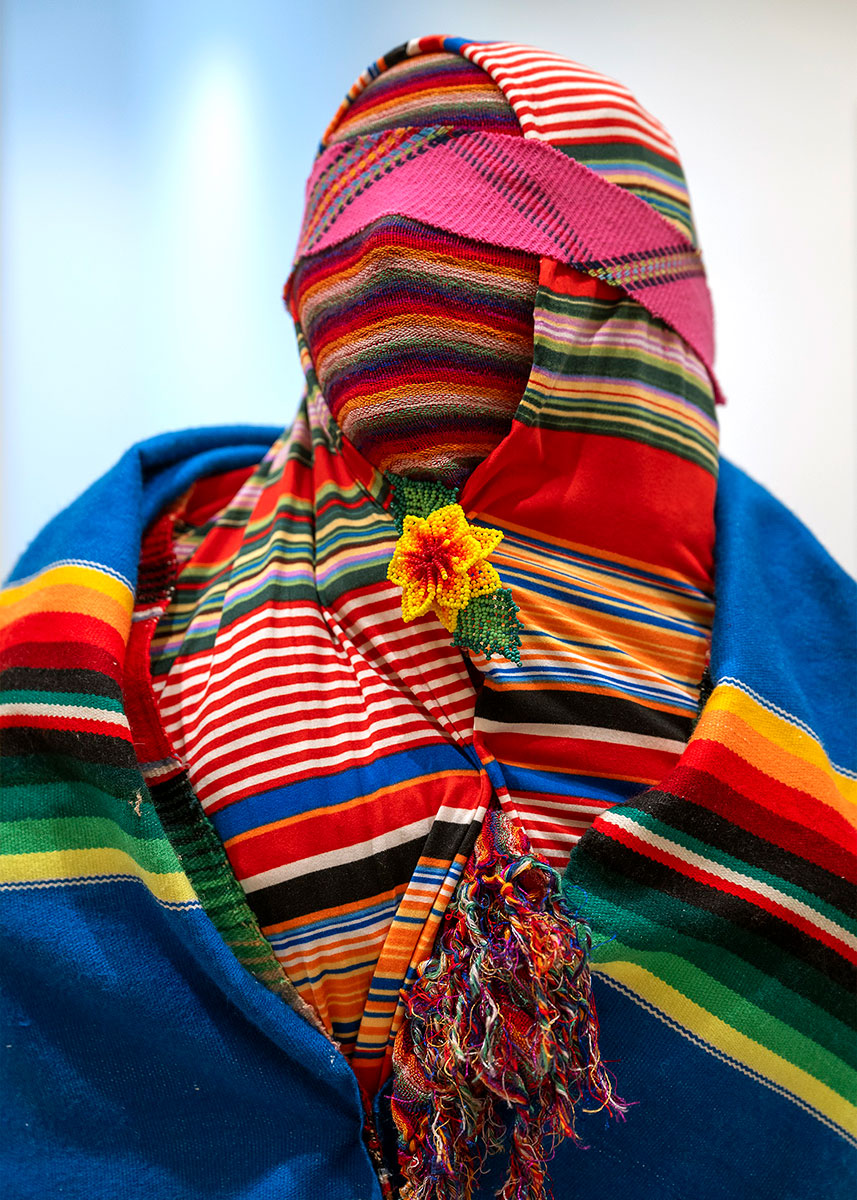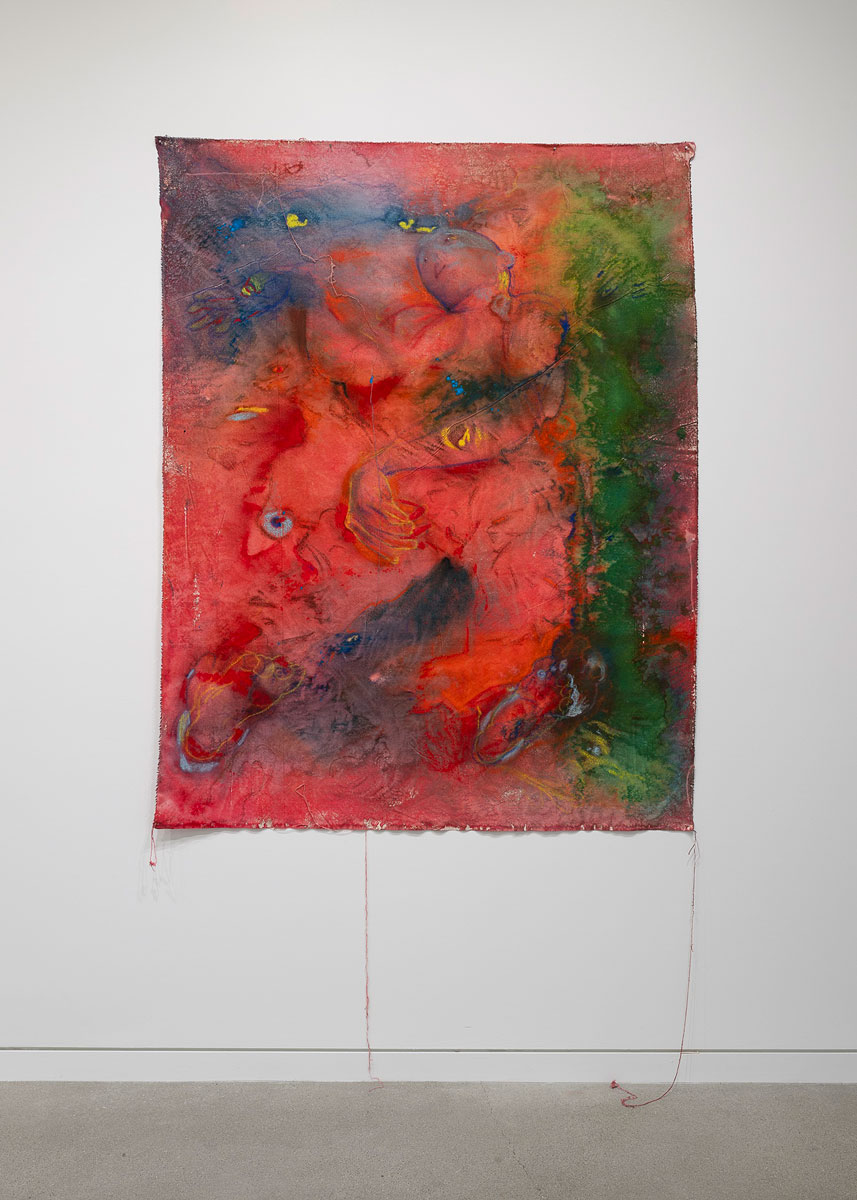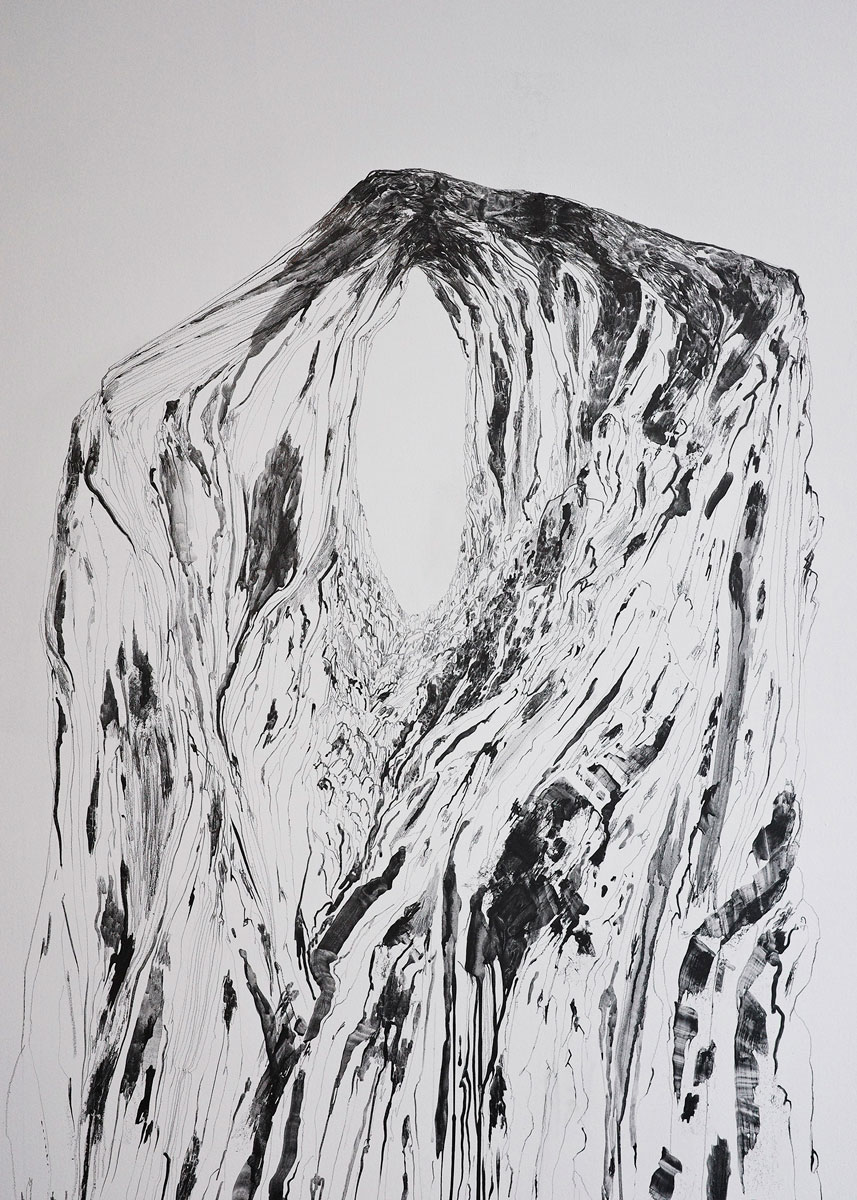PRESENTATION: Aqueous Nerve
 “Aqueous Nerve” is an exhibition of work by the 2024 graduates of the University of British Columbia’s Master of Fine Arts program.This program in the Department of Art History, Visual Art and Theory is limited each year to a group of five to six artists. Their contributions to this exhibition are the result of intensive feedback and development within an intimate and discursive working environment. During the past two years, these artists have worked closely with their Advisory Committees, engaged with their fellow MFAs in weekly group critiques and reading groups, artist talks and open studios and built relationships with their peers and the faculty of the department’s art history and critical and curatorial studies streams to develop their own aesthetic, theoretical and historically grounded artistic practices.
“Aqueous Nerve” is an exhibition of work by the 2024 graduates of the University of British Columbia’s Master of Fine Arts program.This program in the Department of Art History, Visual Art and Theory is limited each year to a group of five to six artists. Their contributions to this exhibition are the result of intensive feedback and development within an intimate and discursive working environment. During the past two years, these artists have worked closely with their Advisory Committees, engaged with their fellow MFAs in weekly group critiques and reading groups, artist talks and open studios and built relationships with their peers and the faculty of the department’s art history and critical and curatorial studies streams to develop their own aesthetic, theoretical and historically grounded artistic practices.
By Efi Michalarou
Photo:University of British Columbia Archive
Francisco Berlanga “You Can’t RSVP to a Ritual”: A tidal wave of vivid textiles has washed up onto the concrete floor of the gallery space. Shrouded spectres rise to greet us and related remnants are summoned to the scene. Folded squares of cotton levitate in the air. Swathes of textured colors interspersed with kitschy printed compositions of lurid cartoon cowboys. Their comforting creases have been draped above us on clothing lines and loom over our every move. Stacks of breeze blocks and cement-coated connective tissue remind us to avoid drowning in the deluge of fabrics. At this very moment, Francisco Berlanga is hosting a social gathering that we haven’t officially been invited to but must remember to attend. The artist expects us to find ourselves in the gravitational pull of the ritual’s ebbs and flows, or at the very least try to dip our toes into his ongoing solar sphere from time to time. All of the loose threads that we encounter here have been sourced from different All of the loose threads that we encounter here have been sourced from different streams of the artist’s memory bank, reflecting the relationship he has with his own cultural heritage. Berlanga thinks about his Mexicanness in terms of partial absences and fragmented pieces that he has both connections to and distances from. These parts have all been either found at fabric stores, gifted by family members or crafted by the artist himself. Alex Gibson “Never an Island, Entire of Itself”: Ask a queer person what the word “natural” means to them. Go on, I dare you. It can be a painful question. I am not going to provide a straightforward answer in this essay, but I will point to places where the question of what is deemed natural, and how it is made to appear so, materializes in Alex Gibson’s image, video and installation works. Conceptions of what is natural have been weaponized against queer people whose bodies and social structures tend to run up against normative models. However, queer theory has taught us that that collision can also be generative, in that it calls into question ingrained assumptions about how family life, medical and legal systems, and institutions operate. In living differently, or at least at a relative distance from the abstraction that is the “statistically imagined norm,”1 queerness points to the tenuousness of that norm, as well as the support and management that it requires in order to maintain itself.2 Queerness suggests that that very norm is not necessarily “natural,” but that it is in fact constructed, held rigidly in place, and constantly reproduced: in other words, naturalized. Gibson’s practice similarly opens up a place where conventions can be challenged and new questions asked that may make us think differently about all that appears “natural” to us. For example, the courtyard of Gibson’s family home in Barbados meets the island’s vaster contours in Extensions of unfixity, exhibited in 2023, in which terracotta tiles are laid out among a collection of grey stones. Tiffany Law “Sedimentality”: Memory takes the shape of its medium: refracted in the crystal ball, blurred by tear-filled eyes, smeared by the sting of liquor, stolen by the photograph only to be betrayed by fugitive1 emulsions. But perhaps memory’s great peril is the individual’s conscious mind. The lone remembering mind backflops on Narcissus’s placid pool. Trying to pantomime the past, blind and with a now stinging back, a synchronized swimming routine of one agitates and scatters the reflection. One’s attempt to recall and retrospect only disturbs the image of the past: all mimesis is creative. In her sustained critical dialogue with print and drawing media, Tiffany Law invites us to embark on a journey downstream of the Ovidian pool, where the drawing’s surface becomes a site of endless inquiry and reinterpretation that register the rippling deformations of the thinking mind. Central to Law’s practice is the concept of sedimentation – a process wherein layers of memory accumulate and disintegrate, leaving behind traces of meaning while erasing others. Jesse Ross “Force of Habit” : Confronted with Jesse Ross’s large-scale, polychromatic abstractions, my eye sets out across the canvas nomadically, glancing over its topography as if viewing an aerial landscape. Diffuse colours are interspersed with saturated areas, which appear to me as crinkles in the painting’s surface. The canvas hangs flat against the wall, yet these “contractions” create a haptic effect, an optical experience of dimension and depth. My gaze lingers in these places where the fabric seems to be pinched or scrunched together, like knots in wood. What at first appeared to be a free-form explosion of colour is in fact mediated by a second layer of careful activity: Ross repeatedly selects and redefines areas of the canvas, which both highlights and makes order from the chaotic dispersion of colour. This optical “pinching” or “contracting” of the painting’s surface suggests a reading of Ross’s work in terms of habit.1 In the work of Henri Bergson and Gilles Deleuze, habit is understood as the “contraction” of previous patterns of experience into learned expectations, oriented toward the future. Simply put, if effect B follows cause A enough times, we can begin to assume that B will follow A next time. This pinching together of discrete, particular experiences into habits engages both mind and body; muscle memory and anticipation combine to make the world predictable and more easily navigable. The full texture and thickness of an event are filtered out and we proceed in our activities in a more streamlined manner. Morgan Sears-Williams “Technical “Improprieties” & Handmade Cinema”: The ways in which Morgan Sears-Williams makes films is categorically “improper”: she buries her film in the ground and into sand, she develops it in lavender, she scratches and makes marks onto it, and allows for vintage equipment to digest it and spit it out. Her works challenge the “masculinist fetishization of technical mastery” and the patriarchal standards of perfectionism and professionalism that plague the film industry. Instead, Sears-Williams allows audiences to see celluloid as a material object, something tangible and physical, rather than as something precious that cannot be handled. The very point of Sears-Williams’s aesthetics is its imperfection: the film grain, its harsh textures, its visible damage and erosion. For the artist, celluloid and 16 mm projectors are active agents and “co-conspirators” in the image-making process. By throwing out the “proper” and “authorized” ways to treat celluloid, as standardized in male-dominated commercial film, Sears-Williams instead aligns herself with the women and queer figures of “handmade cinema.” The term “handmade cinema” includes the hand-painting, manual editing and careful manipulations made to each frame that has traditionally been the domain of unsung feminine labour in the film industry. In her most recent work, Sears-Williams takes as her subject the clothing-optional beach at Hanlan’s Point on the Toronto Islands. Hanlan’s Point is a queer space known for community gathering, cruising and being the location of Toronto’s first Pride celebration in August of 1971. However, in the decades since, the continued existence of this safe space for queer expression has been jeopardized due to the effects of numerous floods and changing tide patterns. In addition, homophobic violence and proposed redevelopment projects have continued to threaten the queer sanctity of the beach, which is to say that the ecological preservation of Hanlan’s Point is part-in-parcel with the preservation of its queerness. Sears-Williams responds to these precarities by animating the interrelationships, both human and natural alike, of the site. In feeling along the edges (2024), she buried her film for five days in the sand dunes of Hanlan’s, where the natural elements (such as hungry fire ants and tiny rocks) were given space to affect the emulsion.
Participating Artists: Francisco Berlanga, Alex Gibson, Tiffany Law, Jesse Ross and Morgan Sears-Williams
Photo: Morgan Sears-Williams, through the bushes and the trees, you’ll find me, 2024, Courtesy of the artist
Info: Morris and Helen Belkin Art Gallery, 1825 Main Mall, University of British Columbia, Vancouver, Canada, Duration: 3/5-2/7/2024, Days & Hours: Tue-Fri 10:00-17:00, Sat-Sun 12:00-17:00, https://belkin.ubc.ca/





